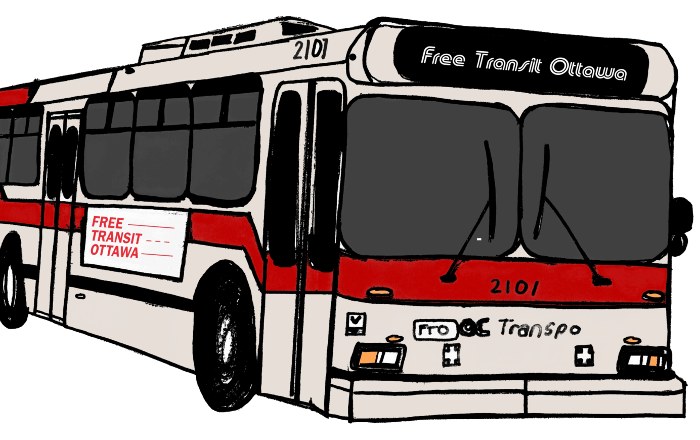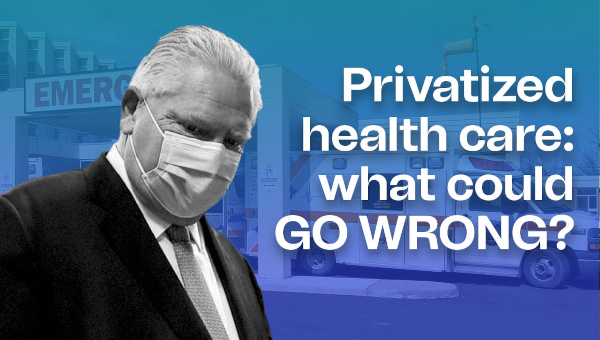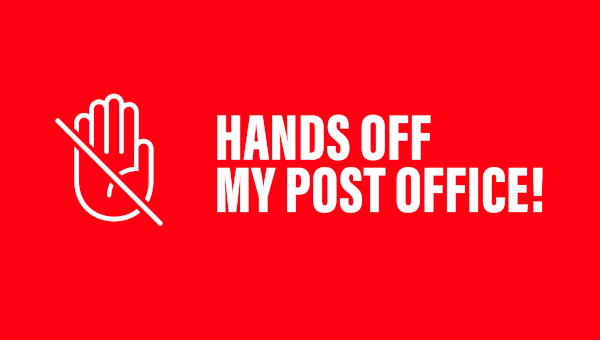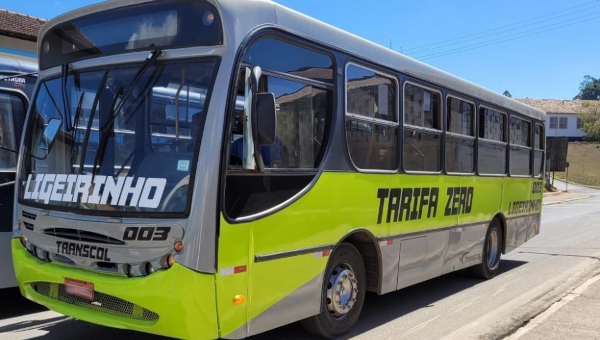Campaign for Improved and Democratized Transit in Ottawa
Our ‘New Vision’ involves demands for a significant expansion of ‘Fare Free’ and accessible transit, improved service, and a governance structure that would make transit decisions more accountable to the citizens of Ottawa.
Campaign Demands

Affordability: We propose that transit should be free to use during off-peak hours (i.e. between 9:00 am to 3:00 pm; 6:00 pm to 6:00 am; and on weekends).
Improved Transit: In order to make transit more reliable, expansive, and convenient we propose that 50 buses should be added to the weekend service, neighborhood bus routes should be created to link citizens to local health and social services, shopping and entertainment (i.e. beginning in priority areas such as Vanier, Bay Ward, West Ottawa and Barrhaven), 40 vehicles should be added to the Para Transpo fleet, and bus-only lanes should be created on the most habitually late routes.
Democratized Transit: We believe that the transit system will be improved by allowing the citizens who use transit, and the workers that operate it, to have input into the decisions that affect their lives. Therefore, we propose that the Transit Commission should include 4 directly-elected citizen representatives and 2 representatives from the transit workers union, ATU Local 279, and 6 (as opposed to the current 8) City Councillors.
This plan, including the loss of fare revenues, would cost roughly $95-million. We propose to finance it by devoting the increase in the federal gas tax to OC Transpo, increasing development charges on new single – family suburban housing, raising parking rates, reducing the planned two lane road widening projects to one lane, and eliminating the wasteful tax break for building on Brownfield (previously used) lands.
Estimated Cost of Our Demands and How to Pay for Them
We have estimated that the cost of our “new vision” for public transit in Ottawa will cost $95-million. Please see below for a breakdown of the cost of each demand followed by our proposal to finance them.
Demands
- Fare Free Transit in Off Peak Hours
- Making transit free in off peak hours (9:00 am – 3:00 pm; 6:00 pm – 6:00 am; & weekends) has an estimated cost of $55-million.
- Current fare revenue is approximately $190-million. We’ve been advised that 25-30% of ridership is in off-peak hours suggesting that somewhere between $47-million and $57-million of the $190-million (total fare revenue) is collected during off peak hours.
- Adding 40 Vehicles to Para Transpo Fleet
- Adding 40 vehicles to Para Transpo (this represents a 20% increase to the current fleet) has an estimated cost of $6-million.
- We also support the implementation of an online booking system, in addition to the existing phone booking system, which will cost approximately $1-million.
- Increasing Weekend Bus Service
- We propose increasing the frequency of weekend service by adding 50 buses to weekend service (i.e. 1 per each ‘Frequent’ and ‘Local’ bus route currently operating. The estimated cost of this is $22.5-million.
- We calculated this figure by dividing OC Transpo’s annual operating cost by the number of vehicles, which yields a cost of $425,000 per vehicle, or $22.5-million for 50 additional buses. This estimate corresponds to other published figures.
- Creating New Bus Only Lanes
- We propose that bus only lanes should be enforced during rush hours on Bank, Montreal Road, Laurier, Carling, Woodroffe, Merivale, Hunt Club and Riverside Drive to increase the reliability of the most habitually late buses [6, 7, 15 (was 12), 21, 39, 55 (was 103) 75 (was 94) 80, 85 and 87]. This would have a nominal cost.
- Creating New Neighbourhood Bus Routes
- We are calling for the creation of new ‘neighbourhood’ bus routes that link citizens to local health & social services, shopping and entertainment. These would begin in priority areas such as Vanier, Bay Ward, West Ottawa and Barrhaven. This would involve adding 27-28 regular buses or 50 Para Transpo vehicles. Estimated cost is $11.5-million. [See “Increasing Weekend Bus Service.”]
- Restructuring Transit Commission
- We are calling for the democratization of the Transit Commission. This will involve restructuring the Transit Commission to consist of 6 City Councillors, 4 directly elected citizens and 2 representatives of ATU Local 279. This will have only a nominal cost.
Financial Plan
We propose that the $95-million needed to finance our “new vision” for public transit can come from the following sources:
- Planned increase in Federal Gas Tax Transfer – $50-million
- Increased parking charges: $8-million1
- Increase the levy on Uber/Lyft in lieu of providing service to handicapped from $.07 to $.30/trip [as per the recommendation of a Consultant hired by the City of Ottawa] – $4-million
- Eliminate tax rebate on Brownfield developments $7-million2
- Lower the cost of the City’s plans calling for $50-million annually to be spent to widening 2 lane roads to 4 lanes by limiting the widening to a single lane $20-million3
- Increase the development charges for transit by 10% on all new units of housing built by developers and by 15% on single family houses. $6.5-million
Click here to view our petition in support of these demands.
If you are interested in getting involved in the campaign please send us an email at freetransitottawa@gmail.com.
Endnotes
- We note the city will be increasing the current hourly rate [$3.00] to $3.50 on January 1. We propose to increase it to $4.50/hr [50%], extend paid parking to commercial areas that are currently exempt and apply it on Sundays, with all the revenue applied to transit services. If the demand for paid parking remained constant, these changes would increase parking revenues from the current $15-million by at least $10-million, but we expect that the demand will decrease somewhat and yield only $8-million.
- There is no evidence suggesting that these grants which have been averaging $7-million per year actually have an impact on the actual location of real estate development. See “Taxpayers gave developers $70M in last decade through brownfields policy.”
- The resulting 3 lane highways would be designed such that there are 2 lanes for the predominant traffic flow [i.e. into the city centre in the mornings], with 1 of these lanes being bus only during rush hours.





